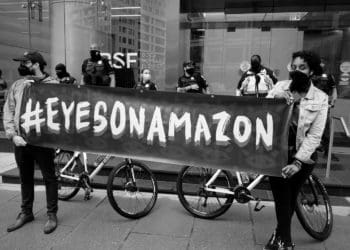Jay Rosen continues a weekly series on common questions about and issues with corporate monitorships. Here, he discusses the ins and outs of a monitor’s role.
There are variety of tasks and roles a monitor takes on when engaging in an independent monitorship. A monitor should understand the types of approaches they will take to make an organization more compliant, starting with understanding the work plan.
Many times, the monitor must push the organization along by getting buy-in and building consensus.
Finally, there should be an awareness of helping the company being compliant in the future.
Understanding the Mission of the Monitorship
The starting point is understanding what the mission of the monitorship is. Monitors really begin at the beginning. Sometimes we meet separately with the government agency to get an appreciation and understanding as to why they think things have reached this point. We need to know what they see as the existing problems in the company, as well as what they see as the problems in the industry. And then, of course, we do the same thing with the company. Such meetings could also include outside counsel, who have been living with whatever the precipitating cause or problem is that led to the settlement with the government or the investigation. They’ve lived with it for years. And in many cases, by the way, the company has already remediated significant portions of the problem.
Paper or Real Program?
A monitor should have a focus on a particular goal and a particular set of tasks, but from there, it is very much a “people” exercise. It is often made obvious relatively early on in the process whether the company has a paper program or real program. A monitor should spend time at the higher levels of the company and at the middle and lower levels of the company. Some of the specific techniques can be one-on-one interviews, site visits to specific offices and using focus groups, gathering people at the same level so we don’t get middle managers and upper managers together in one room.
It is critical that both company management and the regulators not be surprised by a finding. This means the monitor (and team) should literally pore through the company to come up with an honest final assessment or report for the organization. It is important to give the company credit where it has remediated or demonstrated improvement, and this means emphasizing to the government the wins a company’s compliance program may have sustained.
One Size Does Not Fit All
In monitorships, as with compliance programs in general, one size does not fit all.
A monitor should test whether there is sufficient training on the code of conduct, compliance policies and procedures and other issues, such as a conflicts of interest policy. There should also be inquiries into hotline overview and use. Additionally, the monitor may offer recommendations to senior management from what he or she gleans in employee interviews.
A Compliance Moment and Baseball Tickets
Here is a live example from one of AMI’s past engagements; it was around having a compliance moment once per week at company meetings. The organization was an engineering company, and they took safety very seriously, opening each company meeting with a safety moment. This led to the suggestion of opening meetings with a compliance moment, which employees used not simply to state ethics and compliance issues, but to describe situations they faced daily.
A situation arose where an employee was offered tickets to a baseball game by a vendor. The company policy on conflicts of interest prevented the employee from accepting the tickets, and he felt conflicted because he wanted to go to the game. More importantly, he did not know what to tell the vendor to make them understand he could not accept the tickets.
Through the dialogue that followed in the course of this compliance moment in the company meeting, the company employees felt they had an opportunity to be part of the process.
This demonstrated that ethics and compliance is not something imposed on them, but something that is part of their job and their responsibility.
Working with Diverse Groups and Benchmarks
A monitor must literally work with groups as diverse as the board of directors and the employees on the shop floor. It is incumbent upon the monitor to use a variety of tactics and techniques to fulfill the mission. An independent and experienced monitor is required to use a variety of tools to help an organization move forward with a compliance regime. A monitor should also have the experience to come in and not only look at how your company is doing, but also benchmark against what is happening internally and across other industries.
In the final analysis, the company is going to have a set of recommendations to follow and an expectation that when the process is finished (we will speak about continuous improvement in a future blog), the company is going to have a shiny, new, state-of-the-art compliance and ethics program, and the monitor will have contributed to making this a better, more resilient and compliant business.
In case you missed the earlier installments of this ongoing series, please see the links below.
Everything You Always Wanted to Know About Monitors But Were Afraid to Ask
Part 1: Corporate Monitorship 101: Who Are They, and What Can You Expect?
Part 2: What is a Post-Resolution Monitorship?
Part 3: What is the Power of a Pre-Settlement Monitorship?
Part 4: What Issues Should a Company Consider When Hiring a Corporate Monitor?
Part 5: How Much Will a Corporate Monitorship Cost?
Potential Issues in Corporate Monitorships
Part 1: What are the Fears and Concerns of Working with a Monitor?
Part 2: What is the Impact of Monitors?










